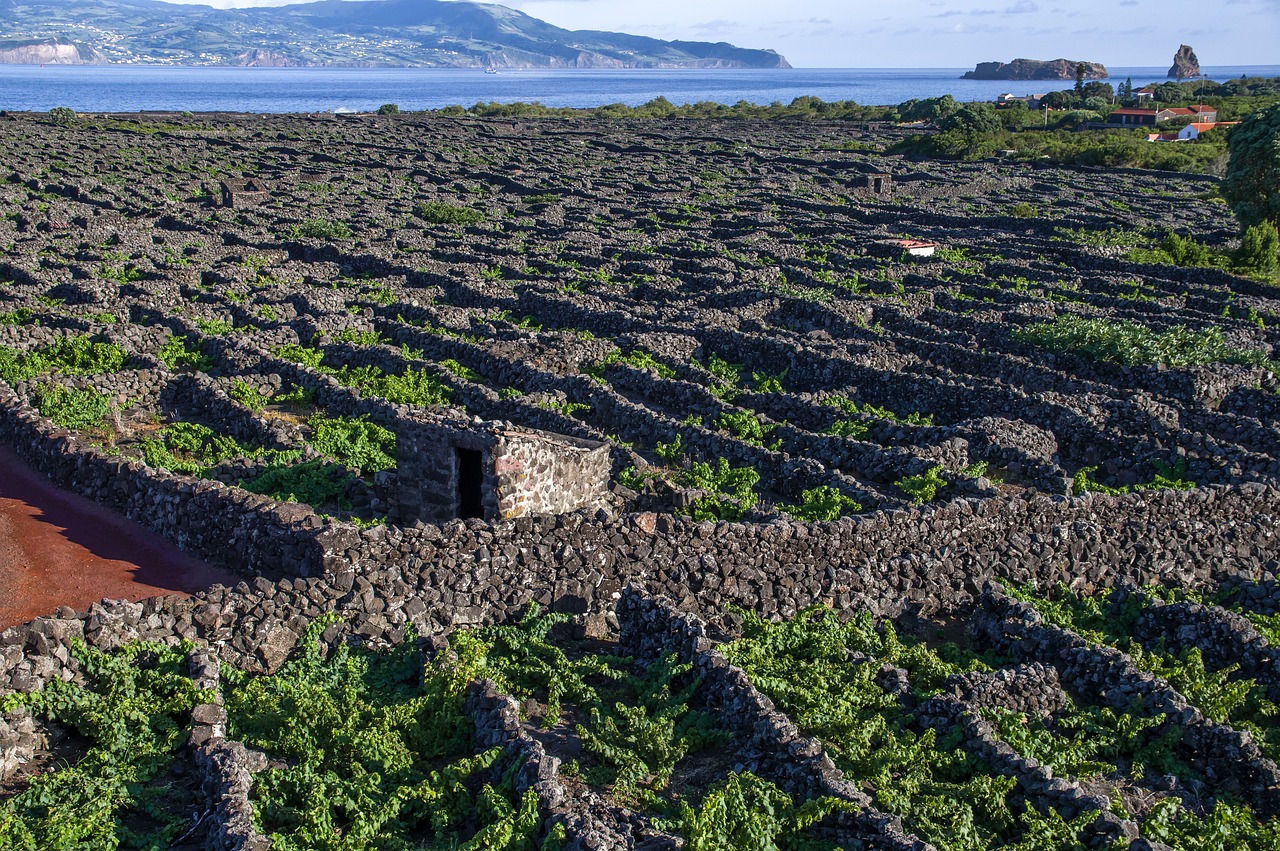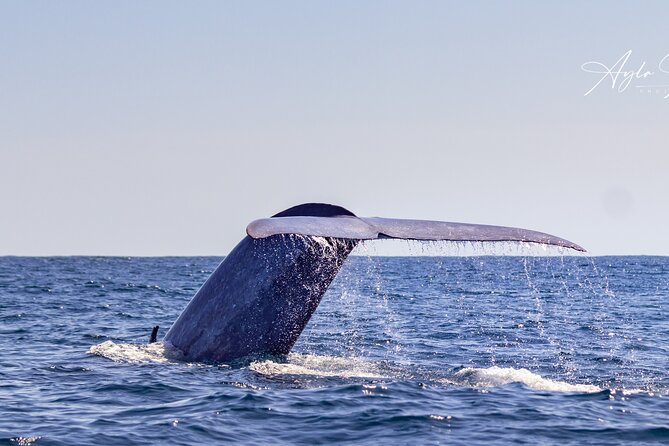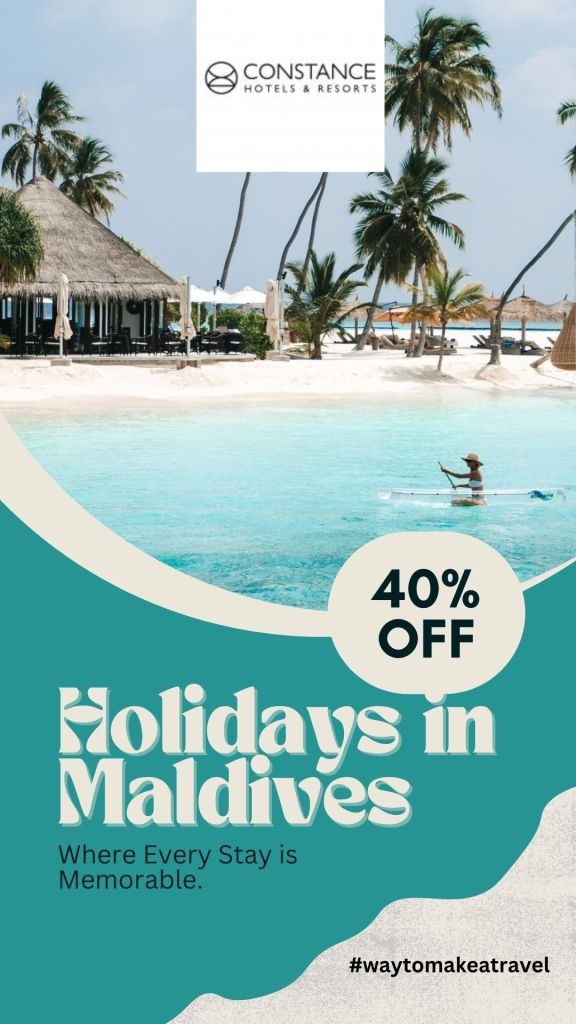PONTE DELGADA, AZORES ISLANDS – Far away from everyone, almost in the middle of the North Atlantic, the nine exotic islands of Azores emerge from the depths of the sea. The Azores owe their existence to the volcanic forces within the earth. Volcanic traces can be found everywhere on the islands. These form the most magnificent landscapes, lava weathering into fertile soils on which, supported by the Gulf Stream, whose tropical waters wind around the Azores, unique vegetation can thrive. A Garden of Eden for nature lovers and hikers.
Azores Location
Azores Islands are located north and south of 38 degrees north latitude and east and west of 28 degrees west longitude. With a land area of 2300 km 2 they are about the size of Luxembourg. 1500 km separate you from Europe and 3500 km from North America.
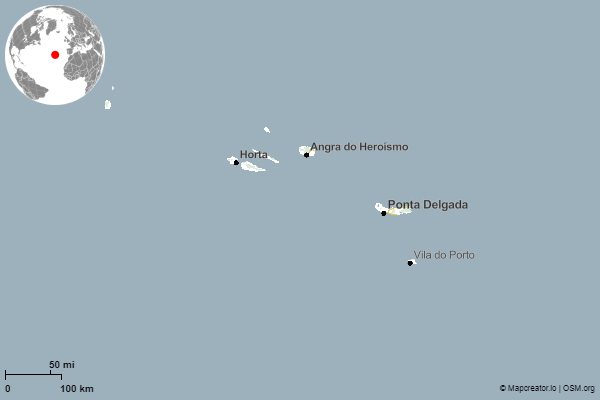
History of Azores
Nautical charts from the 12th century, in which islands in the North Atlantic are already drawn, and Phoenician coin finds suggest that the Azores were already known before the arrival of Portuguese seafarers. Officially, however, the Portuguese discovered the Azores islands in the 15th century. Henrique O Navigator, Henrich the sailor, founded a seafaring school in Sagres, Portugal at the beginning of the 15th century.
Around 200 million years ago, the supercontinent ”Pangaa”, which encompassed all continents, broke apart. Since then, the continental plates, the American, Eurasian and African plates, have been drifting. The earth repeatedly shook, breathed fire, rained ash and hot magma constantly rise from the earth’s interior. Over the course of millions of years, layer by layer, a huge mountain range has grown, the Mid-Atlantic Ridge. Santa Maria is considered the oldest island, at more than 80 million years old; the others are considerably younger, at up to 10 million years old.
When the legendary Portuguese Prince Henry founded the seafaring school in Sagres, he heard of sea islands in the far Atlantic, at the end of the world. Diogo de Silves set out on his behalf. In 1427, he found Santa Maria and claimed it for Portugal. Later, on the way home from Madeira, he is said to have found Sao Miguel, followed by Terceira, the third island. In subsequent expeditions, the Portuguese also sighted the other islands by 1452: Gracioza, Faial, Pico, Sao Jorges, Flores and Corvo, and thus the nine Azores islands were complete 40 years before Columbus’s great voyage to America. It is written that he got caught in a strong storm on the way back. Island of Santa Maria was his salvation.
Over the last 500 years, good and bad times have alternated. The Azores have been an autonomous region since 1976, even if they belong politically to Portugal and therefore to the European Union since 1986. Stable economic progress is now possible on the islands. The Azores should and want to wake up from their tourism slumber. They are focusing on the development of sustainable tourism. National Geographic has chosen the islands as the second most beautiful archipelago in the world because of their intact ecosystem, social stability, cultural identity, positive future prospects and the quality of their tourism management. The Council of Europe declared it the European Region of the Year 2010.
Today around 240,000 people live in the Azores. They make their living mainly in tourism, agriculture and fishing. They are down-to-earth, open, and extremely warm and welcoming. At the beginning of the 19th century, the Azores experienced an economic boom, particularly through the cultivation of oranges. However, after the orange plantations were destroyed by fungal infestation, today only cattle breeding is of supra-regional importance. The cattle came to the islands with the first settlers. The omnipresent cows provide creamy butter, fresh milk, spicy cheese, tender and juicy meat. The whole secret of the exceptional quality of these products lies in the fact that the cows can stay on the pastures all year round. There are no stables in the Azores.
The times when thousands of islanders emigrated to Brazil or North America are over. On the contrary, many emigrants return and others immigrate, attracted by the beauty, peace and quality of life that they find on the islands. Well-known personalities such as the singer Nelly Furtado, the poet Joao de melo, the footballer Pauleta, the musician Nuno Bettencourt and others come from the Azores.
Azores Vegetation
The Azores belong to ”Macaronesia”, which means, happy, flowering islands. The Macaronesian region includes the island groups in the North Atlantic, west of the coast of Africa.Evergreen laurel forests, a plant community with lush moss, herbs and shrubs, the eponymous laurel tree and a few other tree species, form the primary vegetation of these islands. Only 2% of the original area of the Azores is now covered by laurel forest.
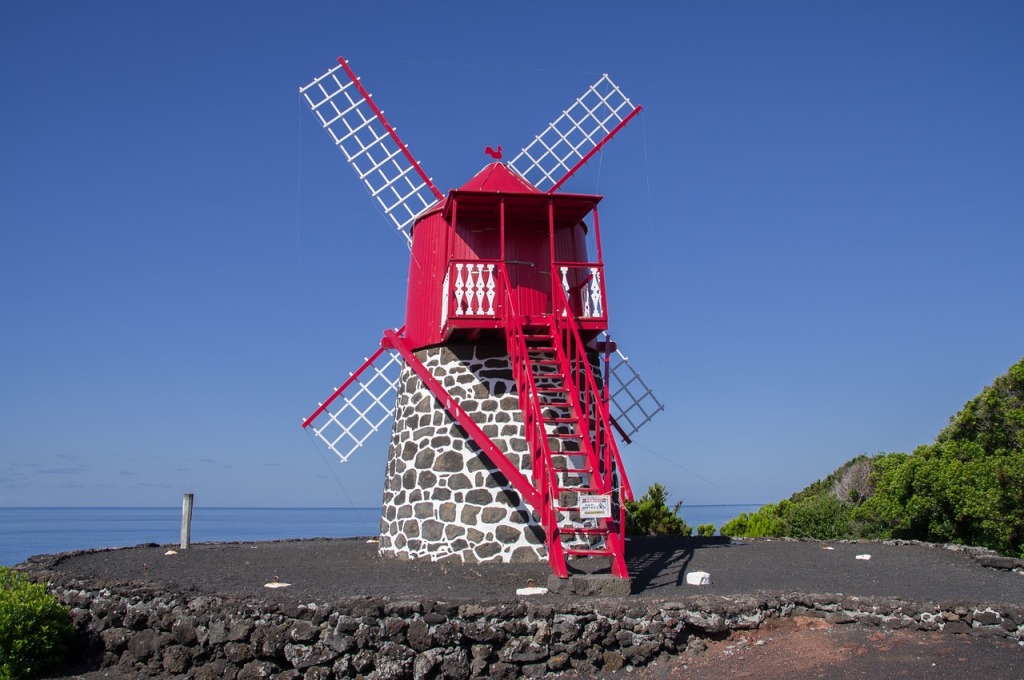
The Laurissilva Forest, a remnant of vegetation from the Tertiary Age that vanished due to glaciation, can be found in isolated spots across all islands. The Central Plateau (Pico Island), Serra de Santa Barbara (Terceira Island), and Nordeste (São Miguel Island) are the most significant examples.
The principal endemic species of flora are laurel, heather, Azores heather (Erica azorica, an indigenous plant), cedars, and colicwood. The Vidalia is a flower unique to the Azores. Furthermore, various flowers, such as hydrangeas, camellias, and azaleas, have been imported to the Azores. Acacia and cryptomeria, larger trees, were also introduced to the archipelago and became commercially important.
Portuguese, Breton and Flemish farmers and Moorish slaves were among the first settlers. They cleared the forests and created pastures and arable land. The fertile volcanic soil and the temperate subtropical maritime climate allow the cultivation of numerous products: corn, wheat, potatoes, yams, pineapples, bananas, tea, passion fruit, pomegranate, wine…
‘Flores’ is the Portuguese word for flowers. Green pastures, surrounded by lush hydrangea hedges, waterfalls, crater lakes, flowers and more flowers make up the unique beauty. On hikes across the island or on boat trips along the steep, deeply rugged coast, it is understandable that this island, located on the western border of the archipelago, is considered one of the most beautiful islands in the Azores.
Azores Climate
The Azores are located in the subtropics. The vastness of the Atlantic Ocean softens the summer heat, and the warm Gulf Stream moderates the winter cold. The climate is therefore moderate, subtropical maritime with summer temperatures of around 25 °C, winter temperatures of around 15 °C and sufficient rainfall in all seasons, so that the islands can bloom in summer and turn green in winter. Completely rainy days are very rare. The average annual temperature in the Atlantic is between 16 °C and 22 °C.
Azores Top attractions
Nine inhabited islands and numerous small rocky islets make up the Azores archipelago. Each of the nine islands is a world of its own, and each island offers something unique to experience. It would be a shame to only get to know one island. According to their location, they are divided into three archipelagos: western archipelago with its Corvo and Flores islands, central with Graciosa, Terceira, Sao Jorge, Faial, and Pico island, and the eastern Azores archipelago with Sao Miguel and Santa Maria islands. Almost 600 km separate Corvo island in the west and Santa Maria island in the southeast and 400 km separate the north from the south.
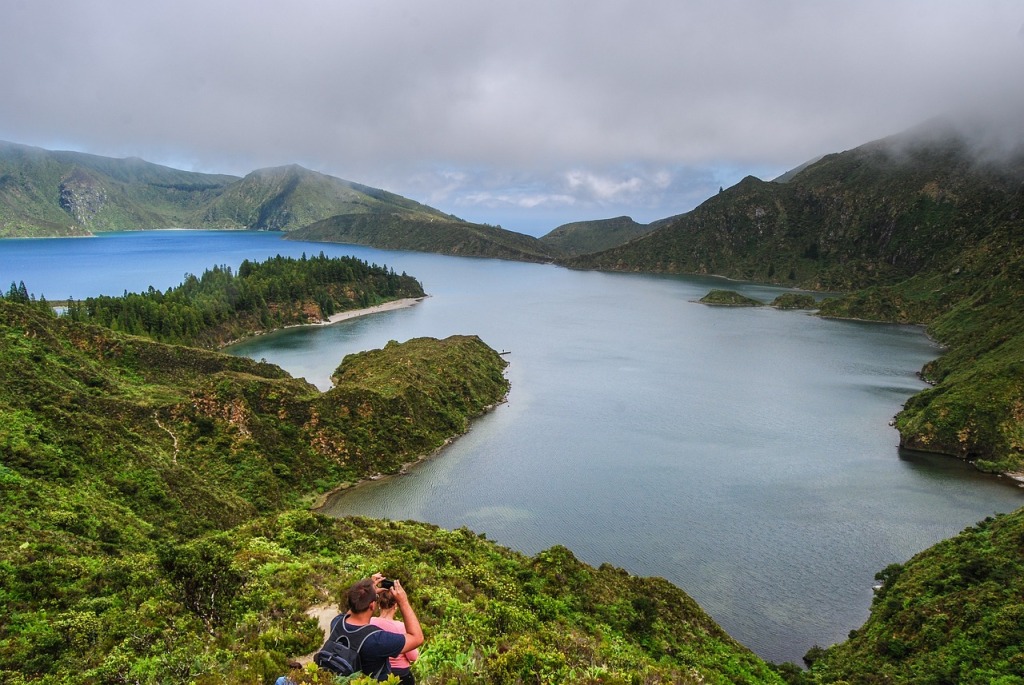
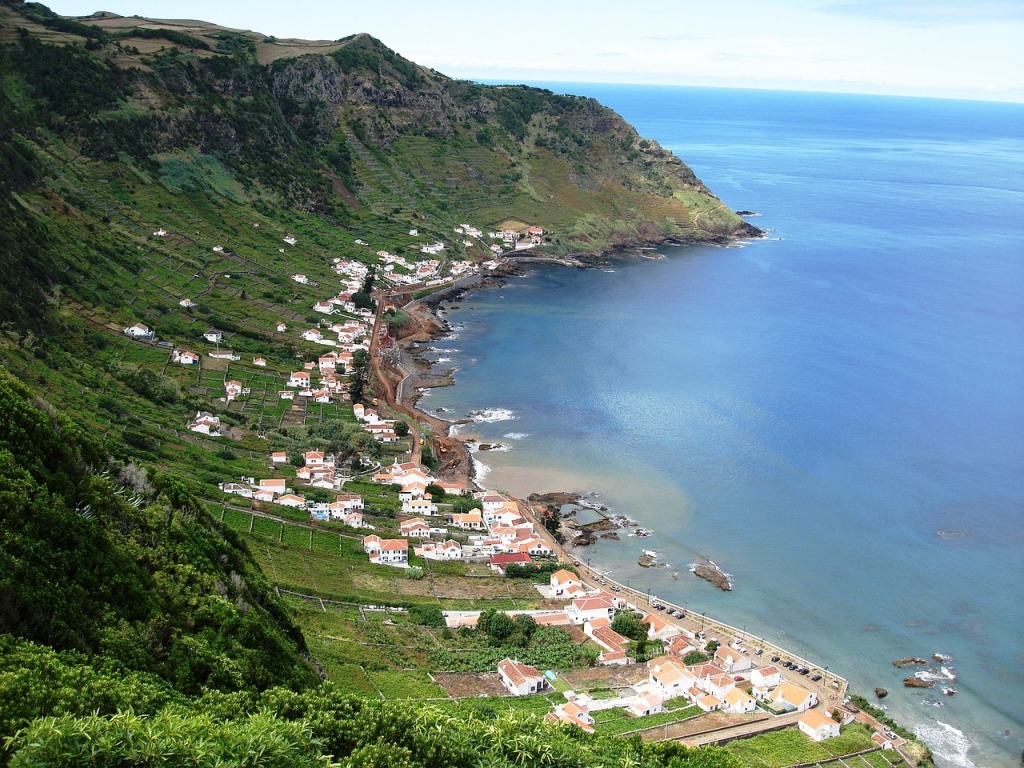
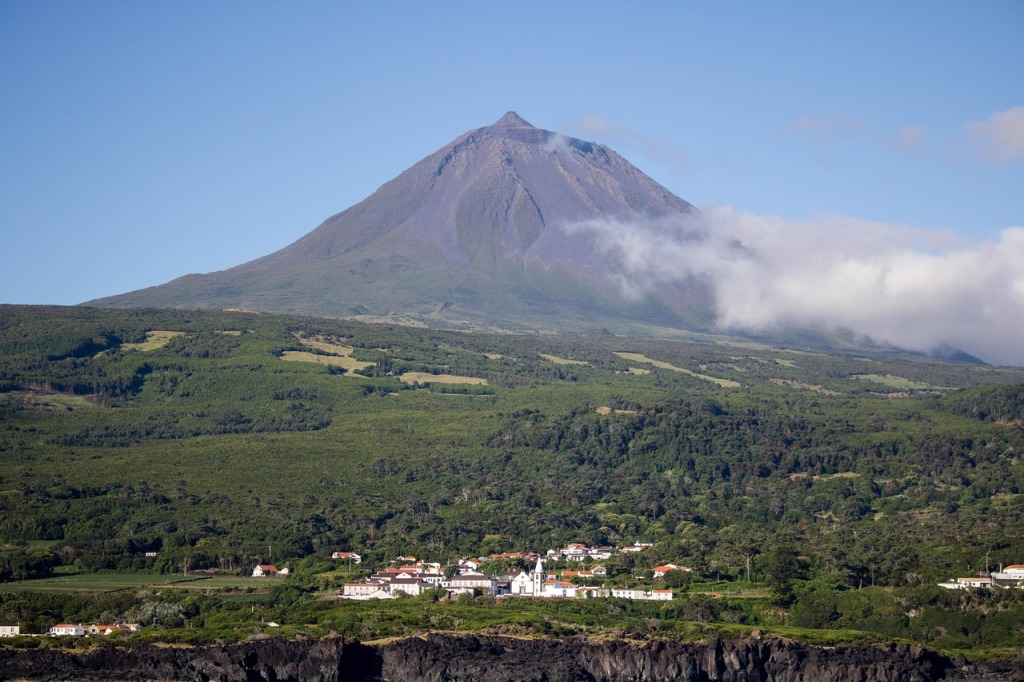

Faiai Island
Faiai is the Azores island where water and underwater athletes from all around the world get their money’s worth and meet there. Imagine a paradise where whale sharks swim through crystal clear waters under you, dozens of devil rays swoop above, and curious blue sharks and massive pelagic fish join you in the ocean. Because of their remote location in the North Atlantic, the Azores are among the best spots in the world to see whales and dolphins.
Peter’s Café Sport
Peter’s Café Sport in Horta on the island of Faial, a few steps from the marina, is a pub, post office, weather station, information office and exchange office, an institution since 1918. It is said to have the best gin tonic within a radius of 2000 nautical miles. Letters, telegrams and parcels are waiting in a drawer for the sailors who have solid ground under their feet in Horta for the first time after crossing the Atlantic. Carved, polished and painted sperm whale teeth and bones can be admired in the Museu de Scrimshaw on the 1st floor above the restaurant.
Colonia Alemao
Away from the Peter’s Café Sport is the Colonia Alemao, the well-preserved German colony, the headquarters of the German overseas cable and telegraph station founded in 1900. From here, the weather forecasts prepared in the Azores, necessary for passenger and merchant shipping, were transmitted to Germany.
Desert Lunar landscape
The biggest attraction, however, is the Desert Lunar landscape in the west of the island, which was created by the Capelinhos volcanic eruption. Here you can get an idea of the adventurous and difficult living conditions of the Azores and clearly imagine how the islands rose from the deep waters of the Atlantic.
Graciosa island
Graciosa island, the graceful one, is often compared to the watercolors that this impressive island has to offer. The white of the windmills with their red conical roofs and the black of the basalt walls are spots of color in the gently hilly green landscape. Here you can climb into volcanic vents, explore caves or observe the flora and fauna of the Atlantic while diving. Furna do Enxofre – the lava cave, located in the southeast of the island and the great Caldeira, is one of the most unique and magnificent volcanic wonders.
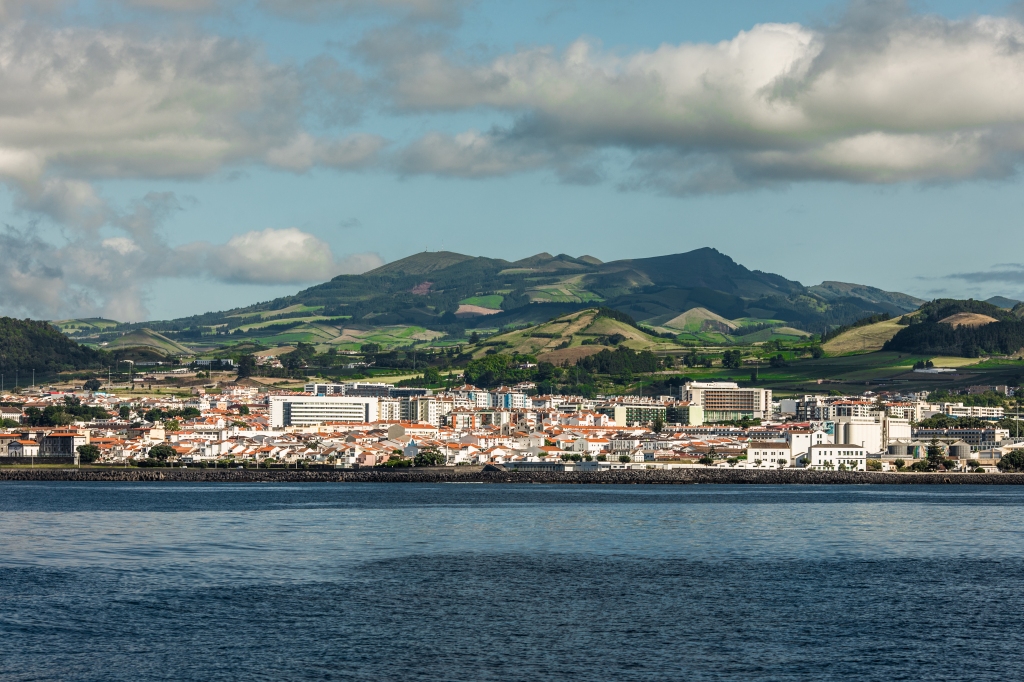
Azores Museums
A visit to one of the many Azores museums is ideal for rainy hours. There are wide range of thematic museums about settlement, local history, folk and sacred art, crafts, viticulture and whaling. Particularly recommended is the Museum Carlos Machado in Ponta Delgada, which provides information about the art and history of the archipelago. Two interesting museums on Pico, Whaling Industry Museum in Sao Rongue do Pico and the Whalers Museum in Lajes, report on whales, whale history, whaling and whale processing. You can find out more about the topic in the Graciosa Museum and in the Fabrica da Baleira in Horta on Faial. The Scrimshaw Museum in Horta is another Azores popular museum that features magnificent, valuable whale carvings. The Azores as a volcano creation, can be seen in the Capelinhos Volcano Interpretation Center on the northwest coast of Faial. And then one should not forget the many wine museums, of which the Museum in Biscoitos on Terceira and the Museum in Madalena on Pico, housed in an old Carmelite monastery, are particularly worth mentioning.
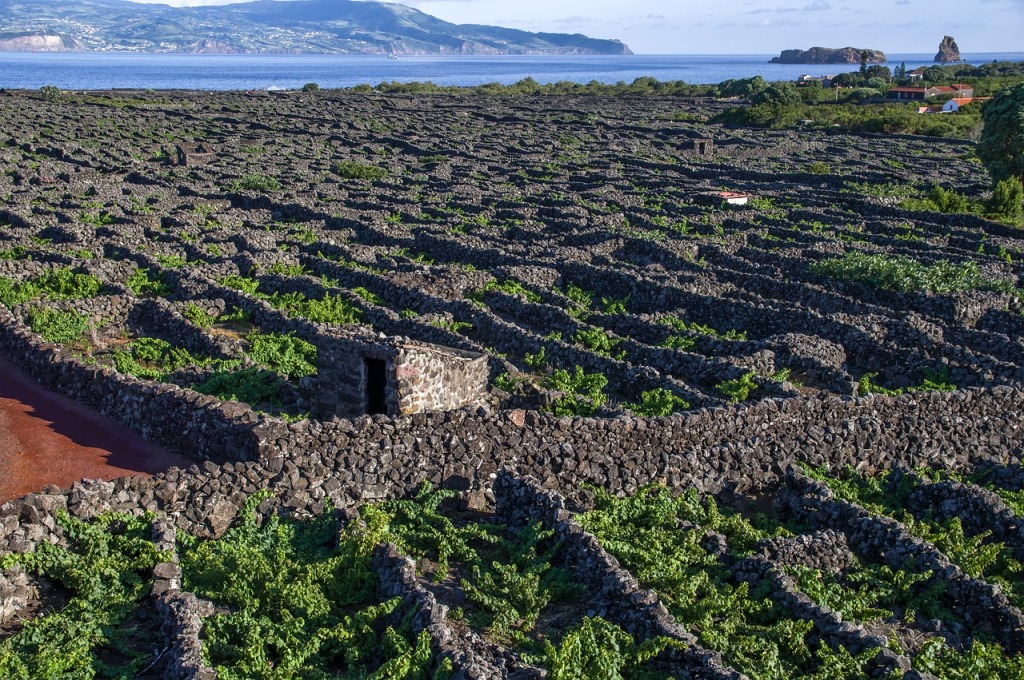
Santa Maria island
According to the legend, Santa Maria island was first set foot on August 15, 1432, on the day of the Assumption of the Virgin Mary — “Mariä Himmelfahrt”. This is how the sunniest and warmest of the nine islands got its name. The Assumption of the Virgin Mary is one of the oldest Christian celebrations and takes place annually on August 15th. The lonely white houses in the middle of the green island and the vineyard terraces down to the white beaches characterize the southernmost and oldest of the Azores islands, the first Azores island to be discovered and populated.
Ponta Delgada
Ponta Delgada, located on Sao Miguel, is the largest city in the Azores and one of the three capitals along with Angra do Heroismo and Horta. It was founded in 1499 by King Manuel I. Today more than 60,000 people live here. But the city doesn’t seem metropolitan or hectic anywhere. The contrast between the black and white of the houses is impressive. The walls of the buildings made of black basalt are whitewashed, the frames of the windows and doors are left black or framed with stripes in bright colors. The patterns and mosaics in the cobblestones made of white limestone and black basalt, between which the grass grows in the middle of the city, are also black and white. The old city center with churches and numerous historic houses, with museums and restaurants is manageable, and the many parks, small squares and streets are easy to walk around. The new cruise ship terminal with a marina on the long waterfront promenade, where yachts from Europe and America moor, is the only large area.
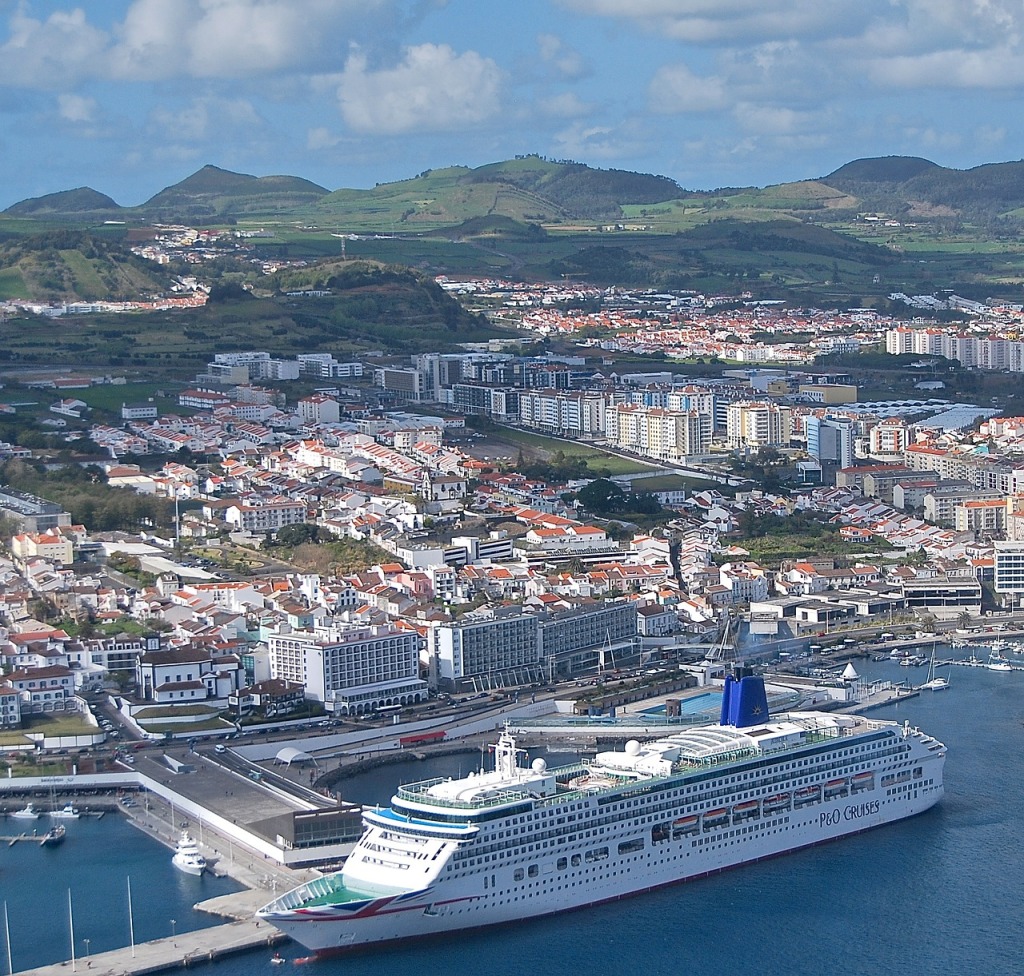
Azores outdoor activities
Azores offer of outdoor activities is immense, from sailing, diving, surfing, paragliding, going deep-sea fishing, to watching whales and dolphins, swimming with dolphins, hiking through valleys and mountains, riding a mountain bike and more.
The Azores are not exactly bathing islands, but in many places you can find natural swimming pools or bays carved into lava rocks with beaches made of dark lava sand for sunbathing, snorkeling and swimming. The exception is Santa Maria with long, golden sandy beaches. The Blue Flags, awards for safe and clean bathing conditions, have been flying on 28 beaches since 2009. In summer the water temperature can reach over 20 C, in winter 16 C. In some places there are hot underwater springs that warm the Atlantic to 26 C and offer special bathing pleasure.
The months of August through April are perfect for surfing. All islands have globally known surfing areas, except Flores and Corvo, which often only allow windsurfing.
A pair of hiking boots is essential for any Azores visitor’s luggage, as hiking on the nine islands is more than simply Muller’s love. Hikes of various difficulty levels are available, including unique plant and animal observations, and can be completed on their own because the hiking routes are well-defined and there are informative hiking maps and descriptions. Unfortunately, public transportation is not very receptive to hikers’ wishes. Taxi drivers are delighted to offer economical service. Organized jeep Safari tours with trained guides or solo automobile treks allow even people who aren’t so comfortable on foot to see the islands’ natural beauty.
‘Imperios’ are the small Holy Spirit chapels that can be found on all nine Azores islands. On Terceira Island they are particularly numerous and decorative. These chapels are only opened for the annual Holy Spirit festivals. They are then the focus of these festivals, which began in the Middle Ages as charitable feedings for the poor. At that time, the Imperios were simple wooden huts. Today they are white, brightly painted stone temples. You can recognize them by the symbols of a crown and scepter and the white dove attached to the outside, symbols of the Holy Spirit.
Wendy_C, Jul 2024
”We took the catamaran cruise. This is a great option for kids/older adults as it is a bit more stable ride. Got to see Sperm whales, Atlantic Spotted dolphins and bottlenose dolphins. A knowledgeable staff member gave background and scientific information on all the animals we saw. It was worth every penny/euro” – read more about Half-Day Whale and Dolphin Watching Tour in Ponta Delgada
Azores Cusine
Everything that land and sea have to offer comes fresh and unadulterated to the table. The Atlantic offers fish and crustaceans in abundance, and the Azorean fishermen have known where to find what for centuries. The numerous cattle that graze in the pastures all year round provide fresh milk and juicy meat. São Jorge is sometimes compared to Portugal’s Parmesan, but I believe it to be considerably stronger. Queijo São Jorge is created with raw dairy milk from the island of the same name, and has been made in the same method for centuries.There are dewy-fresh vegetables and wonderful fruit. Visit São Miguel’s little pineapple plantation to learn about the environment that produces sweet, petite Azoean pineapples. While Azorean pineapples are more expensive than pineapples shipped to Europe from South America, the sweeter flesh is worth the extra money. Passion fruit, bananas, and guavas are among the tropical fruits grown on the islands. The Azorean cuisine is rustic and very tasty. It scores not only with its freshness, but also with its numerous spices. For generations, the islands have served as a port of call for ships carrying spices from the Far East.
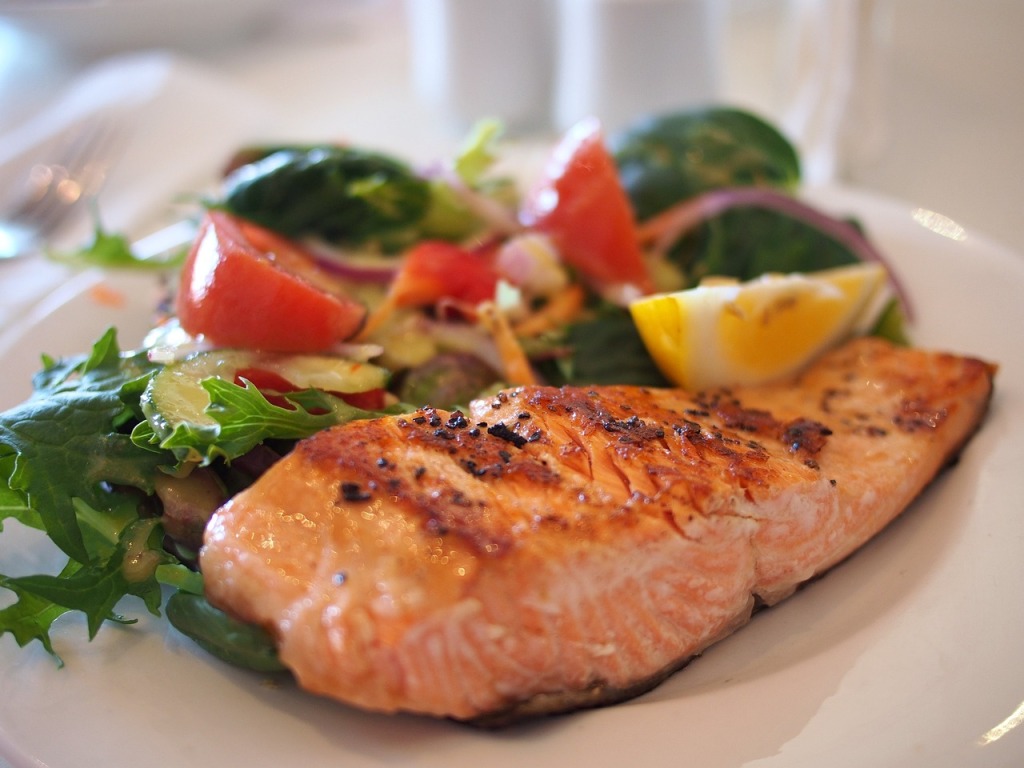
Rump steaks from Terceira, Cozido from Furnas (freshly caught fish), cheese from Sao Jorge, sweet aromatic pineapple from Sao Miguel, yam stews, queijadas (sweet cheese tarts), delicate wines, passion fruit liqueur and Aquardente brandy from Graciosa are worth more than one meal.
If you prefer eating clams or mussels, you should definitely try limpets. Grilled conical shellfish (lapas grelhadas) is a popular dish on the Azores islands. The lapas are typically served sizzling in the pan in which they were fried, seasoned with butter, garlic, and lemon. The texture is chewier than clams or mussels, but they are delicious and worth trying.
Azores Flights and boat connections
AIR Berlin flies all year round from Düsseldorf or Nuremberg, with connections from many German airports, non-stop to Ponta Delgada in about four hours. The SATA Internacional operates once a week non-stop from Frankfurt during the months of April to November, and twice a week during the peak summer period about four hours to Ponta Delgada.
With a change in Lisbon, the Azores islands of Sao Miguel, Faial, Terceira, Pico and Santa Maria can be reached almost daily with TAP Portugal from Frankfurt, Hamburg and Munich.
There are boat connections between all the islands in the archipelago. Ferry connections between the islands in the central group start from April to early October. The distances are considerable, so the journey from Terceira to Graciosa takes 4 hours, for example, and from Terceira to Sao Jorge 3 hours. The closest distance they cover is between Pico and Faial. These ferry connections run several times a day on every half an hour for each way.
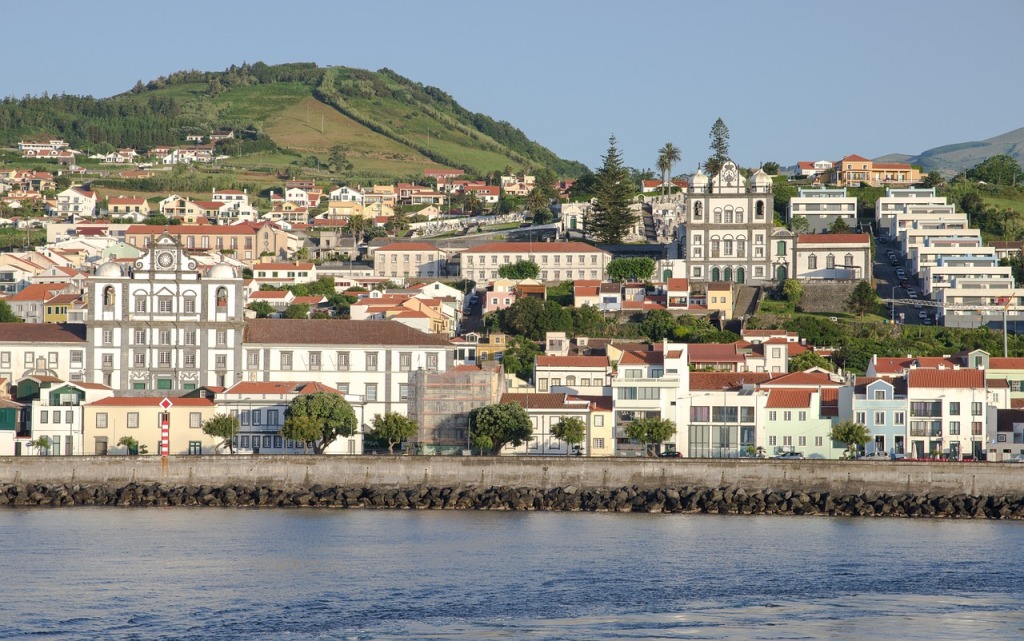
Accommodation in Azores
Accommodation options are available in a wide variety of requirements and price categories. There are official campsites on almost all islands and there are also youth hostels on Pico, Sao Miguel, Santa Maria, Sao Jorge and Terceira. You can stay in simple private rooms, small guesthouses, holiday homes, in restored palaces, monasteries, mansions or in three, four, five-star hotels. Booking a room in the historic pousadas of Faial and Terceira are particularly attractive. Former fortresses have been converted into luxurious hotels, and you live in light, modernly designed rooms behind embrasures and thick fortress walls. You can also book a stay in the Casas Acorianas, the typical, traditional accommodations such as estates, stately country houses, a windmill, and monasteries. They are offered on all nine islands. Anyone who wants to contribute to sustainable tourism and choose their overnight stays based on ecological considerations should pay attention to the Green Key certificate. It recognizes particularly environmentally friendly tourist businesses.
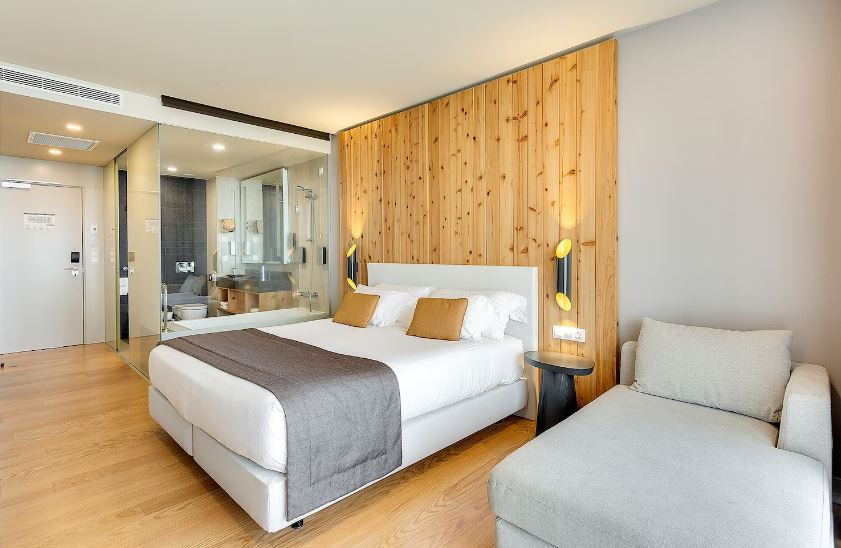
” Pedras do Mar Resort & Spa located at São Miguel Island offers a priviliged Atlantic Ocean view. It’s a perfect choice for a romantic getaway or for a family holiday. During the day, you can relax at our Spa Pedras D’Alma with beauty and wellbeing center, and at our health club with indoor pool with jacuzzi, sauna, turkish bath with chromotherapy and gym” – Booking Hotel in Sao Miguel by Trivago.
👉For latest holiday booking hotel in Azores offers visit our Partner links here⤵️
🌐BOOKING HOTEL IN AZORES BY TRIVAGO
Promotion:
Keywords: #azores #azores travel guide #waytomakeatravel #bookinghotelin #accommodation in azores #Azores Flights and boat connections #Azores Cusine #Azores outdoor activities #Santa Maria island #Ponta Delgada #Azores Museums #Faiai Island #Azores Climate # History of Azores # Azores Location #exotic vacation islands #Europe’s hidden gems
